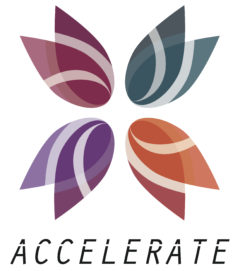The evolving landscape of European priorities – which ones should research infrastructures address, how, and if at all
Jana Kolar
Introduction
For years, pan European research infrastructures (RIs) and large-scale national facilities have contributed to the excellence of the Union’s science base. In European programmes, they were firmly nested in the Pillar dedicated to scientific excellence and supported though a dedicated work programme. In addition, they have contributed to training, innovation, and partly also to the other pillars of the programme, such as the one addressing societal challenges. ESFRI, the European Strategy Forum on Research Infrastructures, since 2002, has been supervising the establishment and development of a Pan-European Research Infrastructures landscape. So far, this has led to a pooling of national resources in excess of 10 billion EUR. The field even got a dedicated regulation, the ERIC Regulation, a rarity in the domain of research and innovation, which is otherwise largely based on soft law, such as Council Conclusions. Today, the European approach to the field of research infrastructures is rightfully considered a huge success, managed jointly at EU level, in collaboration with Member States and associated countries through the European Research Area (ERA).
At the onset of the next European research and innovation programme, Horizon Europe, due to start on 2021, not much appears to have changed for research infrastructures, as compared to the current funding programme, Horizon 2020. They have their dedicated chapter of the programme in Pillar I dedicated to scientific excellence, aimed at supporting similar activities for a similar amount of funding.
While not much has changed for this Pillar, there are significant changes across the rest of Horizon Europe. Most relevant to this discussion is its emphasis on delivering on the needs of society, largely reflected in Pillar II, called Global Challenges and European Industrial Competitiveness, through its five clusters, dedicated to societal challenges, including Digital and Industry. European partnerships[1]will have much more prominent role than in the current programme. However, the main new element are the five mission areas. The missions stemming from each of the mission areas, when elaborated, will differ from the societal challenges in that they will focus on delivering against a specific target within a specific time frame, like taking a man to the moon and back before the 1970s.
Research infrastructures have responded to the evolving landscape of the European research and innovation policy and three meetings are proposed for February 2020 to address the topic of how the various research infrastructures can contribute to the societal priorities reflected in the new funding Programme. In meetings organized by
- ERIC Forum, a network of ERICs,
- LENS – League of Advanced European Neutron Sources and
- LEAPS – League of European Accelerator Based Photon Sources,
the RIs are to address how the RI communities will contribute to the five mission areas of Horizon Europe. The latter is also expected to focus on the contribution to the EU Green Deal.
CERIC warmly welcomes the initiatives proposed by the various RI communities and wishes to contribute to the discussions. With this in mind, the present opinion addresses the following issues:
- Should RIs address wider policy goals and priorities?
- What are the wider policy goals and priorities of future research and innovation in Europe?
- How can RIs currently address the wider policy objectives?
Read the full opinion document here.
[1]European Partnership' means an initiative in which the Union, prepared with early involvement of Member States and/or Associated Countries, together with private and/or public partners (such as industry, universities, research organisations, bodies with a public service mission at local, regional, national or international level or civil society organisations, including foundations and NGOs), commit to jointly support the development and implementation of a programme of research and innovation activities, including those related to market, regulatory or policy uptake.’
